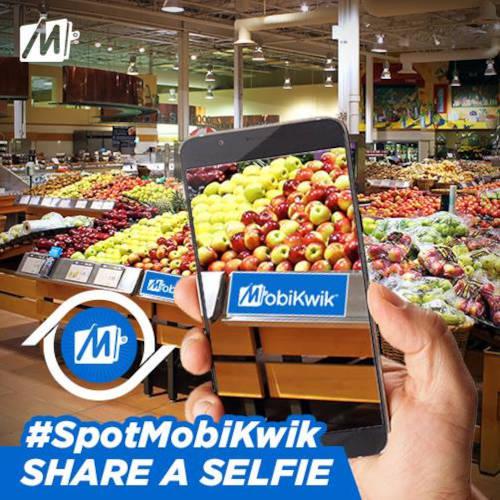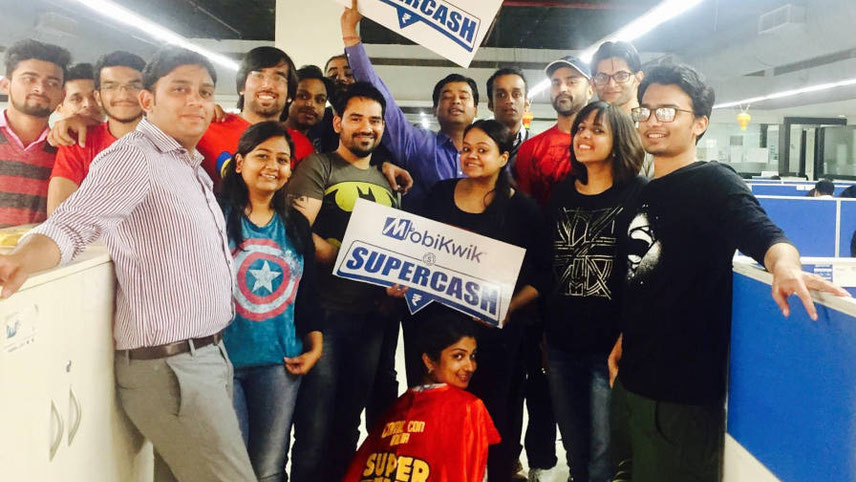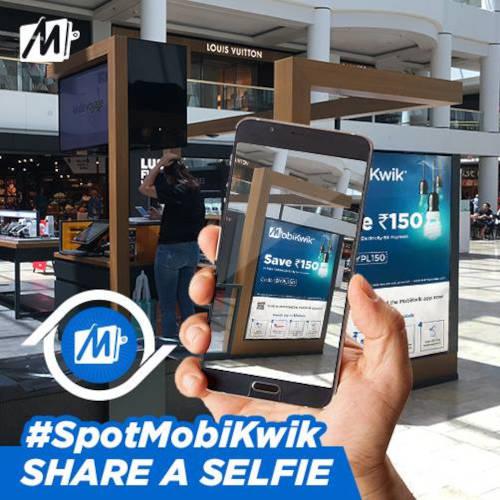-

Bidani: most of our businesses are in black
Initial spell
For the young entrepreneurs, the initial spell was full of interesting elements with the early signs of the anticipated digital era. Incidentally, as Taku recalls, even as the company was trying to popularise its wallet scheme (adding money and paying bills for consumers), the regulations for operating wallet payments were issued by the RBI in 2013. The first proof of having embarked on something with a decisive and defining future became visible in 2013-14 when it got a pre-paid wallet licence from the RBI and received its Series A funding from Sequoia capital.
“By the time we had raised Series A, we had millions of users. And we had a substantial chunk of money in their wallet and, therefore, sitting in our escrow bank account,” Taku explains. The later years saw payment integration with physical retail and e-commerce, eg, Big Bazar, Reliance Group stores in 2015 followed by Spencer, Coffee Shop, EasyDay, etc. The onset of demonetisation, considered to be the biggest blessing for the Indian digital landscape, saw significant acquisition of merchants.
In 2019, Mobikwik ventured into the BNPL segment, a business which is slated to take the credit market by storm considering it is easy to access and available in small tickets for consumers. In 2017, leading private finance firm Bajaj Finance bought nearly 12 per cent stake in Mobikwik, looking for a vibrant digital platform to expand its presence and according to market observers, this had become the trigger point for the BNPL business.
“BNPL is emerging at a very brisk pace globally and India is no exception. Credit card growth is low because it is only given after judging the credit worthiness of the consumer. No such stringent mechanism is needed for BNPL and it can cater to a humungous volume of consumers. These are early days for this business,” opines Sachindra Nath, CMD, U GRO Capital.
“We are a fintech company – one of the largest mobile wallets (MobiKwik Wallet) and Buy Now Pay Later (BNPL) players in India, based on mobile wallet gross merchandise value (GMV) and BNPL GMV, respectively, in fiscal 2021,” the company had maintained in its SEBI filing where it has also claimed to have over 101.37 million registered users and more than 3.44 million ecommerce, physical retail and biller partners at the end of March this year.
“We were one of the first to launch a mobile wallet in India in 2009, amongst the first mobile payment gateways in India having launched in 2011 as well as were amongst the first few players to launch BNPL in India. We aspire to be first at bringing new fintech products to the Indian market by being at the forefront of product innovation,” Singh says.
According to him, the company’s growth journey has also been supported by some notable organic initiatives like the introduction of the mobile wallet for organised and unorganised retail stores in 2016 and launch of MobiKwik Blue American Express Card in 2020. On the inorganic side, the company had acquired ClearFunds (Harvest Fintech), an online wealth management platform which has added more to the offering wallet of Mobikwik for consumers.
-

Putting money in customers’ wallets
Three pillars strategy
A further dissection of MobiKwik’s basic strength reflects a modest base made in three respective domains – consumer payments (Mobikwik Wallet), payment gateway (Zaakpay) and BNPL. Each of these domains have their own independent utility as well as part of the larger structure supporting and complementing each other making the value proposition for consumers more attractive. “Our strategy is simple: we acquire customers from wallet, applying data science we understand his expenditure pattern from payment gateway, and this enhances our engagement and margin with him by providing short-term instant loan services,” says Taku.
Its payment gateway Zaakpay is an aggregator which offers a wide range of payment processing solutions to merchants that includes credit and debit cards, UPI, net banking, mobile wallets and BNPL credit. Its merchant network ranges across categories such as financial services, travel, cab services, online grocery delivery and has quite a long list of merchant partners.
MobiKwik Wallet, its original product, provides over 101.37 million registered users the option of using various funding sources for their financial transactions. As a company note explains, these include savings from bank account through debit card, net banking or UPI; credit through credit card and BNPL products; other pre-paid instruments, including gift cards, pre-paid cards and coupons; and peer-to-peer transfers, such as, wallet-to-wallet or UPI.
“Our consumer payments segment strategy is to acquire a large set of users and create a large acceptance network for them so that they can pay with MobiKwik Wallet anywhere in India,” the note to SEBI says.
The third pillar, BNPL products, is gradually being pushed to the centre stage of Mobikwik’s operations and is defined by two product lines – MobiKwik Zip and Zip EMI. They ensure accessible and affordable small-ticket credit to middle class consumers for regular payments as well as discretionary spends. These platforms are also used to cross-sell small ticket wealth tech.
MobiKwik Zip is the basic product in this category which facilitates seamless one tap credit to its pre-approved users (interest-free for 15 days) in the range of Rs500 to Rs30,000. If the user exceeds the 15-day cycle, he is charged a late fee. A product which has been upgraded many times is Zip EMI which is for those with a good repayment history on MobiKwik Zip –they are then pre-approved for Zip EMI. The lending limit is usually is in the range of Rs25,000 to Rs100,000 and normally carries interest in the range of 2 per cent (monthly). The payment cycle varies from six to 18 months.
“This product enhances our margin considerably. If you order something on credit facilitated by us, we will earn 2 per cent commission fee which is the major element of my revenue model. Out of such customers, 10 to 15 per cent will exceed the interest free cycle. So, I will charge an additional 2 per cent from them. And new users will also be paying a one-time activation of Rs99 for Mobikwik Zip,” she explains. For this product line, Mobikwik has partnered with five lending institutions, namely, IDFC First Bank, InCred, Fullerton India Credit Company, DMI and Faircent.com.
-

A tech-savvy workforce is behind the company’s growth journey
Growth of BNPL
For players in the digital space catering directly to consumers, BNPL is simply one of the most exciting domains to be in today. According to a RedSeer report, India’s BNPL market has rapidly grown to reach $3-3.5 billion in disbursals in fiscal 2021. “Rapid customer acquisition is accelerating the growth of BNPL. The BNPL user base is expected to reach approximately 80-100 million users by fiscal 2026, surpassing the unique credit card user base.
A growing user base and expanding merchant use will drive the market to reach $45-50 billion in disbursals by fiscal 2026. Rapid growth of BNPL will also enable it to compare more favourably with the credit card business in terms of business scale. BNPL annual disbursals are expected to grow from approximately 3 per cent of India’s total credit card spends in fiscal 2021 to approximately 15-20 per cent by fiscal 2026,” the report underlined.
Another report released by EY India early this year on internet businesses had spoken no differently when it maintained that in the aftermath of the lockdown, when personal consumption and discretionary expenditure plummeted, affordability has become a central theme. In turn, this has led businesses and consumers to welcome BNPL options in digital payments, injecting speed, flexibility and convenience in paying.
“It has added a new dimension to the small credit business as against plastic cards where scrutiny of access was at a different level. Here it is mostly on the basis of KYC,” emphasises Ankur Pahwa, Partner, EY India. Mobikwik, through its network claims to have facilitated over 41 million KYCs.
The cumulative GMV base of the company last year was reported at Rs149,319 million which is sharp drop from the Rs212,312 million registered in 2019-20. The consumer payment segment leads the pack in terms of size while BNPL, introduced in 2019, is the smallest component, though it grew by over 100 per cent between 2019 to 2020 before the Corona crisis occurred. “With all our businesses linked with economic activities, the first phase of Corona and restrictions due to it affected us badly. But a smart recovery happened after September,” Taku underlines.
Following its own path
The company undoubtedly has acquired a niche for itself but it has somehow not shown the kind of scale building ability which has become so common in the sector. Paytm, roughly launched around the same time, has grown significantly bigger as in the transaction space it now has 400 million registered users. In the digital transaction space, PhonePe with support from Walmart (300 million registered users) and Google Pay are also assuming a gigantic presence.
If valuation metrics have merit then a firm like Paytm today has gone far ahead (comparisons, as they say, may be odious but in the pre-demonetisation era Mobikwik was believed to be emerging as a serious competitor to Paytm). Difference in size can be well explained by the quantum they are aspiring to raise at Dalal Street – Rs16,000 crore for Paytm against Rs1,900 crore for Mobikwik (possible dilution of 20 per cent).
“They have lacked aggression. Probably, they have been somewhat confused on the strategy front as how to grow their business. In the wallet and payment space there were swift moves, especially after demonetisation, though the introduction of UPI has affected the wallet business. And that is why they are hard-selling this BNPL story in their IPO pitch more than anything else. This has been pushed after Bajaj Finance invested in the company as it was looking for digital options. But on an overall basis, Mobikwik could not become the favourite with investors who have been chasing vibrant companies in the space,” says a senior executive of a rival company.
-
We were one of the first to launch a mobile wallet in India in 2009, amongst the first mobile payment gateways in India having launched in 2011 as well as were amongst the first few players to launch BNPL in India
Taku, however, strongly maintains that Bajaj Finance’s involvement in Mobikwik as a 12 per cent equity partner is not the reason behind the focus on the BNPL business. “They are not involved in pushing this segment. They are with us as financial investors. We have other lending institutions partnering with us for small credit business,” she asserts.
In an ecosystem where India seems to have become the most productive assembly line in churning out unicorns globally, Mobikwik valuation is currently judged at $720 for IPO (total quantum raised by the company is close to $140 million so far). “But we have never believed in vanity metrics,” Taku strongly counters.
This perception of having not done as well as your peers, is also countered by analysts like Satish Meena, former forecast analyst with Forrester and a leading expert in the retail and digital technology centric businesses. “I would not say they are confused. One may argue that they did not have a dazzling presence like some of their esteemed rivals who grew in size quite rapidly especially after demonetisation, which opened the floodgates for everyone in the digital space. They did not have the financial muscle of others (some of them are aligned with giants of the game) and they probably responded to this by focusing on becoming a small company which also has an eye on touching the profitability mark,” says Meena.
This assumption incidentally is backed by company CFO Dilip Bidani who says that on the parameter of contribution margin (the difference between a company’s sales and variable costs, expressed as a percentage), most of their businesses are in ‘black’. “We have seen strong growth in revenue in all our business segments in fiscal 2020 and fiscal 2021 excluding the impact from Covid-19. In addition, all our business segments have been profitable at the contribution margin level in fiscals 2020 and 2021. This demonstrates a strong focus on growth and at the same time an equal focus on profitability, which we believe is the key for sustainable growth,” he emphasises.
According to Rohit Bhayana, former director (business development) of Mobikwik (was with the company around 2015), its performance can’t be simply brushed aside as under achievement. “In each of the domains where Mobikwik is present, it is counted among the leading players and that is their success. For instance, in wallet, they could be number four after Paytm, PhonePe and Google Pay. In the payment gateway, RazorPay and PayU have a large client base but Mobikwik is not an insignificant player. And in BNPL, they are scaling up with the support of partners like Bajaj Finance,” he says.
Taking the BNPL business to a new height, in fact, is the critical element of Mobikwik’s post-IPO plan. “BNPL will be a $50 billion market in the next three years and we have planned to grow big in the segment. SBI card and HDFC card, the two leaders in the credit card business, today have 12-13 million registered users. I am confident that by next year, we will have as many users in our BNPL business and from there we will grow much faster.
-

MobiKwik Wallet has over 101.37 million registered users
In the next two-three years, BNPL and the wallet business will contribute 45 per cent each to our business while the remaining will come from cross sales,” says Taku while adding that currently, the wallet vertical contribution is close to 70 per cent. “MobiKwik is currently the leading BNPL player in India with 22.3 million pre-approved BNPL users. It handles around four million BNPL transactions annually. The company has witnessed an exponential growth and activated 360,000 new BNPL users in 1QFY22 with quarterly GMV at Rs2,464 million; growing 14 times from a year ago,” CFO Bidani adds.
The future strategy, as Bidani further explains, will broadly have the right mix of organic and inorganic options. “MobiKwik plans to utilise IPO net proceeds towards funding organic and inorganic growth initiatives. These initiatives comprise customer and merchant acquisition and retention, investment in data sciences, products and technology, enhancement of the user and merchant experience on our platform. Owing to these investments, we don’t expect MobiKwik to become profitable in the short to midterm," says he.
Along with strengthening the three pillars with a special focus to make BNPL the tallest of them, there will also be a supplementary push to businesses like the selling of financial products thanks to its Clearfunds acquisition. But ask Taku if the company has any plans to align with what is being touted as future mega products like Super App in the digital space and she responds strongly.
“No, we have no such intentions because it will not work here. Had it been so promising, do you think Ambanis would have passed it by? We would not like to get involved in everything. We are present in selective domains and we would like to be among the market leaders in those domains,” she underlines. The statement is probably indicative that even in the post-IPO phase, Mobikwik intends to carry its basic trait of not doing anything flashy.






































